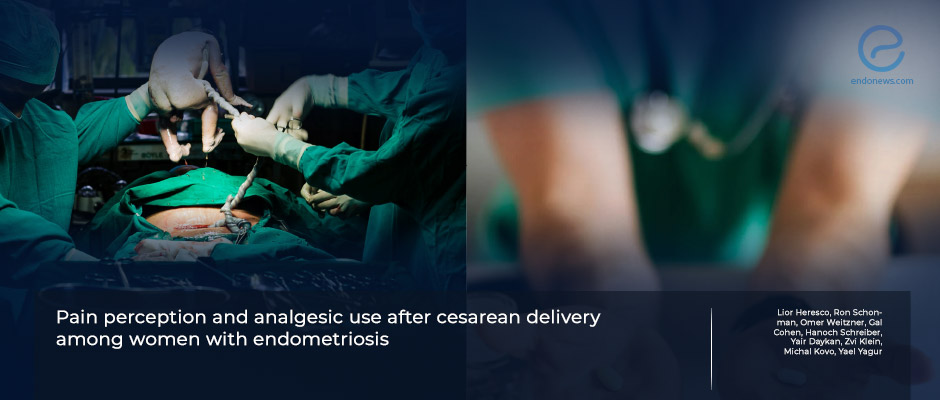Is post-cesarean pain perception and analgesic use in endometriosis-affected women different?
Feb 29, 2024
Women with endometriosis require higher amount of analgesics to relieve postoperative pain after cesarean delivery.
Key Points
Highlights:
- Endometriosis is an important reason that increases the use of analgesics after cesarean delivery due to a variety of underlying causes.
Importance:
- Women with endometriosis should be managed for pain relief after cesarean delivery with a personalized approach due to increased analgesic needs.
What’s done here?
- This retrospective case-control study was conducted to evaluate the analgesic use of women with endometriosis after cesarean delivery.
- Patients diagnosed with endometriosis and who underwent cesarean delivery were evaluated, and compared to a matched control group.
- Postoperative pain scored from 0 (no pain) to 10 (most severe pain) was assessed by the Visual Analog Scale (VAS).
- Pain intensity, dosages, and types of analgesics for each group were the primary outcomes. Obstetric and surgical outcomes were also compared.
Key results:
- A total of 71 patients in the endometriosis group and 142 women in the control group were included.
- Pregnancies conceived through IVF and previous abdominal surgery other than cesarean delivery were more common in the endometriosis group.
- On postoperative day 0, a higher amount of full analgesic dosage was used by the endometriosis group.
- There was no significant difference between the groups regarding VAS scores during the entire post-cesarean hospitalization.
- The mean morphine dosage used on postoperative day 0 was significantly higher in the endometriosis group while morphine dosages did not differ significantly between the groups.
- Placental abnormalities and postpartum hemorrhage were experienced more frequently in the endometriosis group.
Strengths and Limitations
- The main strength is data collection about pain perception after cesarean delivery among women with and without endometriosis.
- Assessment of pain intensity with additional objective elements such as the dosages and types of analgesics for each group was another strength.
- Retrospective design and a small sample size could be accepted as the limitations.
Lay Summary
It has been known that endometriosis patients have increased pain sensitivity and different reactions to pain compared to women having no endometriosis. Several mechanisms such as nociception, inflammation, and changes in peripheral and central nervous system pain processing have been proposed to explain this altered pain perception.
Heresco et al.from Israel published a retrospective case-control study titled “Pain perception and analgesic use after cesarean delivery among women with endometriosis” in the European Journal of Obstetrics & Gynecology and Reproductive Biology. The authors sought to evaluate the analgesic use of women with endometriosis after cesarean delivery. Endometriosis patients were compared with the control group in terms of postoperative pain using the VAS score, the dosages, and types of analgesics, along with obstetric and surgical outcomes.
On postoperative day 0, a higher amount of full analgesic dosage was used by the endometriosis group. There was no significant difference between the groups regarding VAS scores during the entire post-cesarean hospitalization. However, the mean morphine dosage used on postoperative day 0 was significantly higher in the endometriosis group while morphine dosages did not differ significantly between the groups. Endometriosis patients were found to have placental abnormalities and postpartum hemorrhage more frequently.
“Increased usage of opioids and other analgesics among patients with endometriosis following cesarean delivery, suggesting that pain relief protocols should be personalized,” the authors added.
Research Source: https://pubmed.ncbi.nlm.nih.gov/38218161/
endometriosis cesarean delivery opioids pain visual analog scale (VAS)

